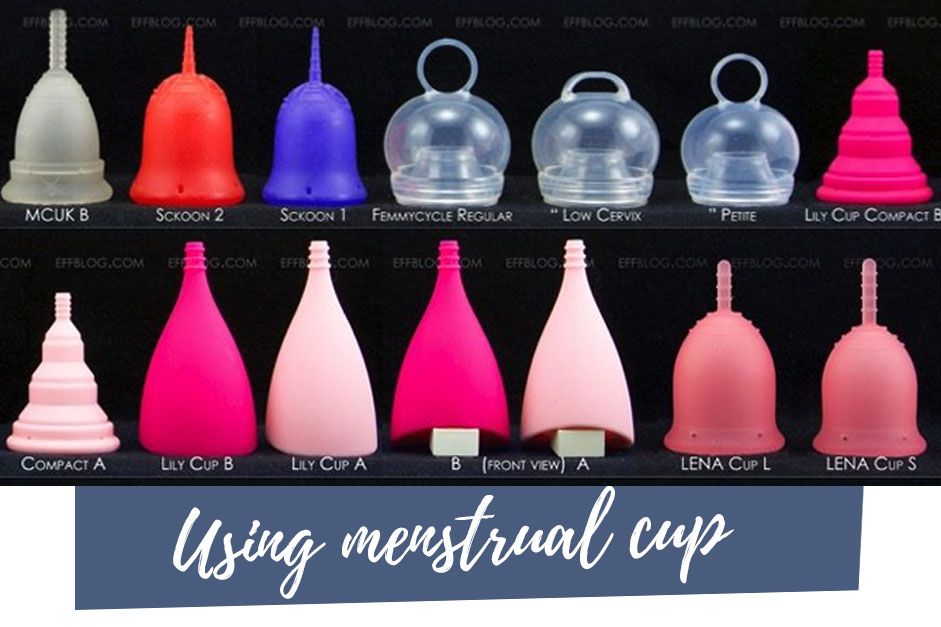Menstrual cups have been the talk of the town lately. Many women are raving about how good and easy it is to use. But for someone who has never used one, the concept of a tiny cup that collects your menstrual blood can be a bit daunting. Many people do not know much about menstrual cups or what they do. That is why we are here! We have collected all the essential information about the cups that you ever wanted to know! Let us explain the flexible, funnel-shaped cup so you can decide whether it is the right fit for you!
What is A Menstrual Cup?
A menstrual cup is a reusable feminine hygiene product. It is mostly made of rubber or silicone, so it’s pretty flexible. You insert the small cup into your vagina to collect the menstrual blood. Cups can hold more blood and are usable, which makes it more pocket-friendly. How long you can keep wearing a cup depends on your flow. But 12 hours is the maximum that you should go for.
How to Use a Menstrual Cup?
The cup may be difficult to use if you are trying it for the first time. It is usually recommended for women who are under thirty and have not given natural birth. However, the cups come in large size too, which is for women who get heavier periods or have given birth naturally.
Grease the tip of the cup with a lubricant; otherwise, it may be a little uncomfortable for first-time users. You can also use water to wet the rim. To make the whole process less awkward, we have come up with simple steps.
- Wash your hands with soap.
- Wet the rim of the menstrual cup with water or a lubricant. Hold it tightly in half with one hand. The rim should be facing upwards.
- Insert it into your vagina, just like you would insert a tampon. It should sit a few inches above your cervix comfortably.
How to Take the Menstrual Cup Out?
You can use the cup overnight, but it depends on your flow. You can wear it for 6 to 12 hours comfortably. If you are going to be out and about, then it is better that you empty the cup beforehand. Now that you know how to put it in, we will help you learn how to take it out.
- Make sure your hands are clean.
- Put your index finger and thumb into your vagina. All you have to do is gently pull the stem until you can reach the base.
- Once you can feel the base, pinch the bottom to release the seal and pull it down gradually.
- Once the cup comes out, you can empty it.
- Make sure you clean the cup properly before reinserting it. Otherwise, there are chances of infection.
Benefits of Menstrual Cup
What helps you choose a product is a detailed comparison of the pros and cons. We have gathered some of the crucial benefits and drawbacks to help you make an informed choice.
This is one of the most attractive features. Unlike pads and tampons, you have to pay once for the cup, and you could use it many times.
Our environment is under imminent threat. Menstrual cycles are made out of silicone and rubber and are much better than pads or even tampons. They are also reusable, which means that you would not be adding waste material to the environment.
On average, a tampon can hold about one-third of an ounce of blood. But, a menstrual cup could hold over two ounces of blood.
Also Read: Benefits Of Menstrual Cup Use
Disadvantages of Menstrual Cup
To help you have complete information, it is essential that we talk about the drawbacks as well.
It is kind of awkward to remove a cup full of blood from your body. It is also common for spills to occur, which can be very messy and irksome.
- It is a complicated process
If you compare menstrual cups with tampons or pads, the cups are harder to put in and take out. They also come in different sizes, so you may have to try a few before you find the right one for you.
- It may cause vaginal irritation
For some people, the cups may cause vaginal irritation or even infection. If the cup is not the right fit or has not been cleaned properly, you may develop infections.
 Menstrual Cup
Menstrual CupMenstrual cups are fairly new to the market. While it is a great option, it’s not for everyone. However, you should definitely try it before deciding whether it is for you or not. You can also talk to your gynecologist about your options and figure out if menstrual cups are right for you.
Also Read: 6 Menstrual Cups

